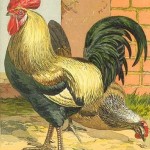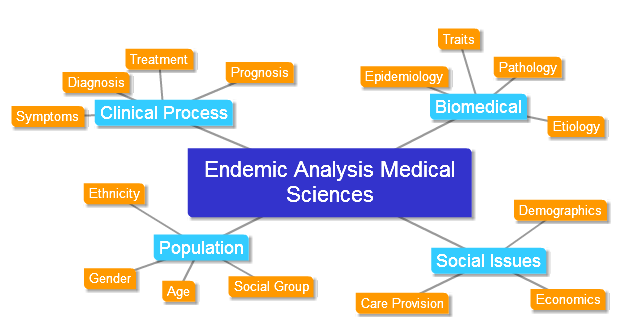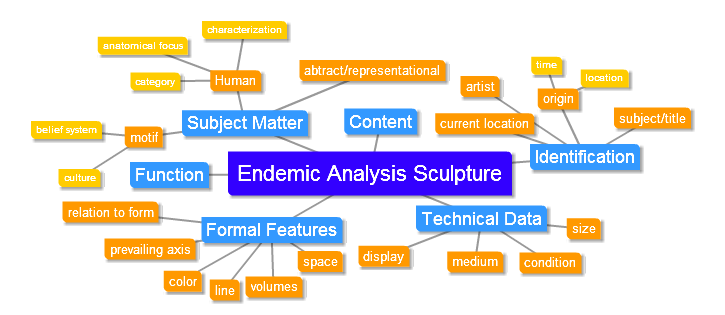 Perform a web search on any hot topic — let’s use “sustainability” — and the deluge of hits (in this case: 161,000,000 on 2/12/16) makes it clear that no one is going to write a paper titled “Sustainability”. There’s just too much out there for a single coherent text. The writer interested in this topic must narrow the focus to create a targeted point of view. How does this process work?
Perform a web search on any hot topic — let’s use “sustainability” — and the deluge of hits (in this case: 161,000,000 on 2/12/16) makes it clear that no one is going to write a paper titled “Sustainability”. There’s just too much out there for a single coherent text. The writer interested in this topic must narrow the focus to create a targeted point of view. How does this process work?
Strategy One: Work within your discipline
Since this Knowledge Base is dedicated to discipline-specific writing, it makes sense to begin narrowing the field by major or field of study. Using the example above, search results change dramatically when specific disciplines are added.
|
|
Still, that is way too many results to search! Even when results are narrowed by only searching academic databases, merely crossing a topic with a discipline fails to generate a reasonable list. More pruning is necessary.
Strategy Two: Use wh-questions and logical relationships
Use the wh-questions to manufacture different POVs on your research — who, what, why, where, when, how, how much/often/many.
- Who: who does this topic impact, who is involved, who is part of the literature, who are the stakeholders?
- What: what
- Why: why does this research matter
- Where: where does this idea come from, where would outcomes be meaningful
- How: how does answering this question impact the field, how many ways can it be tested
- How often: how often does this situation occur, how many times in history
Combine wh-questions to form more specific questions, for example: Under what conditions does this topic happen to a particular stakeholder?
Logic: Part-Whole, Logical (correlation, causation), Chronological (linear sequence organized by time)
Strategy Three: Use the endemic POVs in your discipline
 Reviewing the literature has an answer to the age-old question of which came first, the chicken or the egg. In fields whose methods are primarily experimental, conventionalized approaches dictate how the primary literature is to be analyzed; in other words, the “whole” is given, hence the chicken comes first! Let’s call this “endemic analysis” because the approaches are provided by the field itself and are critical means by which practitioners understand each other’s work.
Reviewing the literature has an answer to the age-old question of which came first, the chicken or the egg. In fields whose methods are primarily experimental, conventionalized approaches dictate how the primary literature is to be analyzed; in other words, the “whole” is given, hence the chicken comes first! Let’s call this “endemic analysis” because the approaches are provided by the field itself and are critical means by which practitioners understand each other’s work.
In many sciences, categories of information have already been established by experimental means. Broadly speaking, endemic approaches include structure, function/process, system, or category (taxonomy, morphology, typology).
The humanities also offers endemic approaches. These approaches often start as novel theoretical approaches (hence, emergent), becoming established through time into endemic analytical approaches. Examples include historical, psychoanalytical, cultural, symbolic, and categorical (types of/groups of).
Using very broad strokes, let’s examine endemic analysis as it happens in the “sciences” and “humanities”. This does not mean there is no original contribution by the writer-researcher! It does mean that the act of organizing the constituent bits is made a bit easier.
Science
As stated above, endemic approaches tend to dominate science: structure, function, system, method, and category (e.g. what a cell is made of, what a cell does, how a cell plays with others, the cell’s neighborhood). Reviews can also focus on “meta” concepts such as methods or really big ideas that cover an entire field of research. The examples below are published review papers in biology; their purpose is to illustrate the range of possibilities for categories of analysis that covers the gamut of the sciences.
- Structure — Epstein-Barr
- Function — NMD / Nuclear Pore Complex (structure + function, a pretty normal combination)
- System — Animal Personality / Multiple Signalling (think environment and ecology)
- Method — Geometric Morphometrics / Imaging Clathrin Structures
- Category — Crenarchaea
- Seriously Meta Stuff — Ecology and Time
Disciplines will also have their own endemic approaches. This is especially clear in the applied sciences, such as medicine, where conventional discipline-specific practice includes application in addition to basic science.

Humanities
The humanities also has endemic approaches. Perhaps the best known include historical, cultural, psychoanalytic, structuralist, and symbolic. Individual disciplines will also have their own commonly-practiced analytical approaches.
- Symbolic — Symbols in Vonnegut
- Cultural —Images of Mothers/Daughters in Post-Soviet Prose
- Psychoanalysis — Grandiosity/Guilt in Conan Doyle
- Historical — Political hegemony and zombies

[add using keyword from databases as well as wikipedia type searches of the “what is discipline X?” sort]
Strategy Four: Delve into the emergent
 Where endemic POVs provide writers a discipline-specific perspective, emergent POVs spice it up by adding something new. Emergent analysis is the process by which the writer-researcher identifies particular patterns of information to reveal a novel perspective on an area of study. This new perspective can be an illuminating re-visioning of a topic of research or a careful analysis of current trends for the purpose of suggesting a new direction for research. Whatever the purpose, the emergent analysis is novel in the sense that it is the writer’s reworking of the literature (the constituent parts) in order to create a new perspective that serves some particular purpose.
Where endemic POVs provide writers a discipline-specific perspective, emergent POVs spice it up by adding something new. Emergent analysis is the process by which the writer-researcher identifies particular patterns of information to reveal a novel perspective on an area of study. This new perspective can be an illuminating re-visioning of a topic of research or a careful analysis of current trends for the purpose of suggesting a new direction for research. Whatever the purpose, the emergent analysis is novel in the sense that it is the writer’s reworking of the literature (the constituent parts) in order to create a new perspective that serves some particular purpose.
Emergent analyses may present something wholly new, a new way of seeing the current topic, or a clarification of what already exists in the literature. The writer presents similarities, differences, congruencies, contradictions, themes, and/or motifs gleaned from (usually) long study of the literature. Because emergent analyses provide re-interpretation, they usually take longer to write and more intense study to accomplish. Clearly, they are also more experimental — not all novel analyses work, and writers must be agonizingly clear to create a cohesive text.
Both the sciences and the humanities embrace emergent analyses, though the longer a topic has been studied, the more challenging it is re-configure. More frequently, novel understandings are brought to an area of study via the “outsider” by borrowing concepts from other disciplines and applying to the researcher’s own field or applying discipline-specific concepts to a topic that had not been considered from that perspective before. The lists below serve as examples and inspiration.
Applying Discipline-Specific Concept to New Topic
- Researching the Internet — applying anthropologic concepts of place and time to virtual environments by reviewing 4 ethnographies of cyberspace
- Psychology and Social Science of Cyberspace — applying psychological concepts to understanding how people perceive of and behave in cyberspace
- Epidemiology of Obesity, Metabolic Syndrome, Kidney Disease — application of classic epidemiological concepts to “lifestyle” disorders
Borrowing Concepts from Others
- Green Supply Chain Management — application of environmental thinking to supply chain management for purpose of creating cohesion in field
- Fast Zombie/Slow Zombie — application of food-chain analysis to understanding zombie movies
- Reflections on Gender and Technology — a social sciences-feminist analysis of technology studies
- Gender and CMC — application of theoretical literature on face-to-face communication to communication and gender in computer-mediated communication
- Alzheimer’s Disease Patients as Zombies — application of discourse analysis about AD to reveal negative social stereotypes characterizing AD patients as zombie-like
- Ancient Art versus Modern Aesthetics — application of present understanding of human cognition to studies of art history
- Phenomenology: Place, Environment, Architecture — the application of philosophical investigation on humanities
- Science Teachers’ Conceptions of Science — application of history of science to education of science teachers
Concept Maps